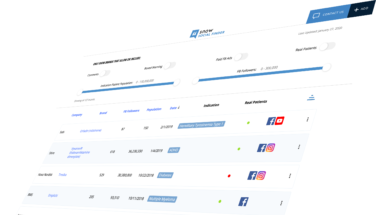The concept of Non-personal Promotion (NPP) dates back as far as the 1980s, and mostly came about as a result of medical practices restricting accessibility of their facilities to the infamous sales representative. Marketers needed to figure out how to remain relevant to HCPs and educate them on their product’s information, despite barriers limiting or restricting their access to valuable face-to-face time. Sales reps can only call on less than half of physicians1, and NPP is used to reach those HCPs not called on by the field force. The healthcare industry easily adapted, and resorted to a mix of tactics deemed non-personal (essentially meaning “not in person”), mainly via digital methods.
While these tactics do accomplish the goal of ensuring brand information is delivered to prescribers, they are not without challenges. As digital opportunities evolve and become more sophisticated, so do their obstacles. Notably, it is difficult to measure the effectiveness of behavior change. Regardless of your brand’s message, there is always a desired behavioral objective, and the success of your campaign relies on being able to demonstrate that. In addition, these tactics are often utilized in a somewhat fragmented approach that is based on aggregated impressions across multiple properties. As a result, the only true measure of success is an arbitrary tally of impressions, giving equal weight to the importance of each impression, regardless of where it occurred.
Equally challenging is the inability to truly understand who is behind each impression. Many digital promotional activities leverage unauthenticated audiences, resulting in brand dollars being spent well outside of the desired targets. The beauty of some digital properties is that the targeted engagements they deliver go beyond traditional impressions. Lastly, there are challenges associated with understanding the “depth” of the interaction. For example, if a target HCP is viewing your brand’s ad while perusing ESPN.com, is that as valuable and meaningful as the same content being viewed within his or her daily workflow? The answer is probably not, so why aggregate the two with equal weight?
To overcome these challenges, marketers must look to targeted social media as the next evolution of NPP. Here are five reasons why:
- Social media is the ideal environment in which to combine the powers of targeted digital media with multichannel marketing while aligning to strategic brand imperatives.
- Social media targeting is powerful, defined by national provider identifier (NPI) or other HCP characteristics, resulting in deeper engagement that proves valuable and meaningful.
- Social media also offers the ability to initiate conversation among your targets or learn from the conversations that are occurring about your brand, its disease state, or other relevant clinical content.
- Social media is the ideal environment for identifying knowledge gaps and using interactive media such as quizzes and gaming to help clinicians understand disease state guidelines, treatment options, and other brand attributes.
- When leveraging a verified social media platform, the audience is engaging within a focused environment of clinical content relevant to their profession that is free from distraction and clutter.
The next question becomes, how do brands measure the effectiveness of social campaigns as part of this next evolution? We’ve compiled best practices to ease the transition:
- Be willing to evolve: Traditional impression-based reporting must evolve into a meaningful engagement-based model.
- Align and combine all of your multiple channels: Engagement reporting does not mean that you should abandon aggregated reporting—all channels should be taken into consideration and combined to understand the effectiveness of the overall campaign, but differently than has been done in the past.
- Not all channels should be treated equally: Traditional reporting metrics such as advertisement views, email opens, and link clicks still serve their purpose and should remain important metrics, but only when they are coming from a verified audience. Also, be sure to include the resulting interaction that occurs, such as participation with interactive content within a defined time frame, or content views within a defined time frame. This also contributes to the overall campaign analysis.
- HCP level reporting is important: The approach only works if the audience can be validated. By demanding and evaluating HCP-level reporting, you can confirm the results you are seeing, and the dollars you are spending are attributable to your desired audience.
- Use your findings: Leverage your HCP-level interaction data beyond validating spend and inform future campaigns by using it to drive personalized marketing efforts and multichannel/field force integration.
As marketers look to refine and evolve their NPP strategies, social media must be an integral component. In using social media, brands can precisely target and validate their audience to not only assess overall impressions, but drive meaningful engagements that contribute to desired behavior change.
Resources:







